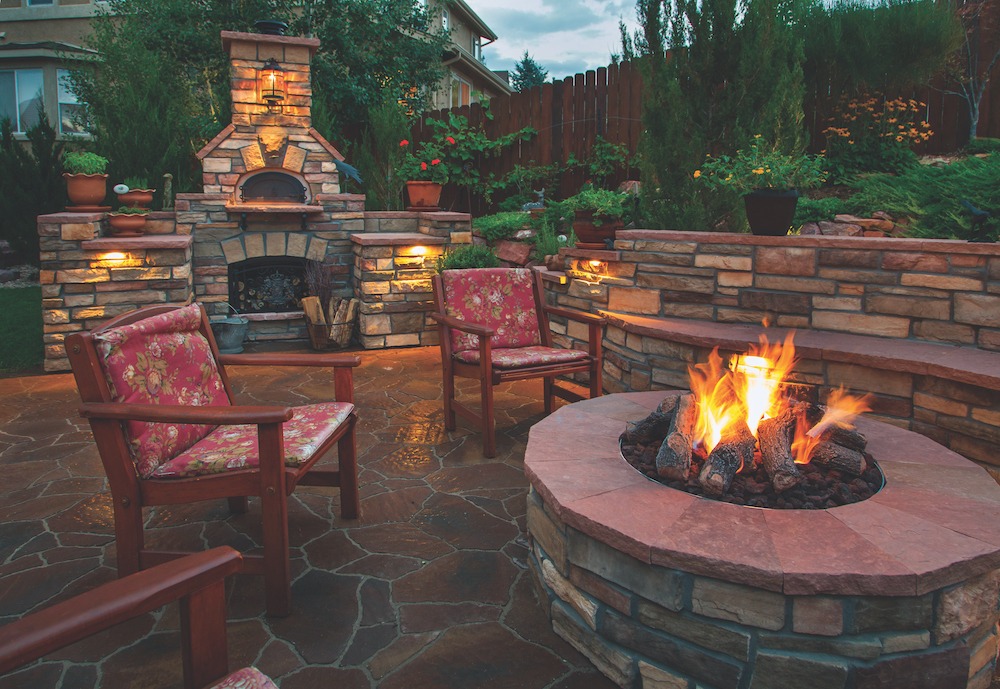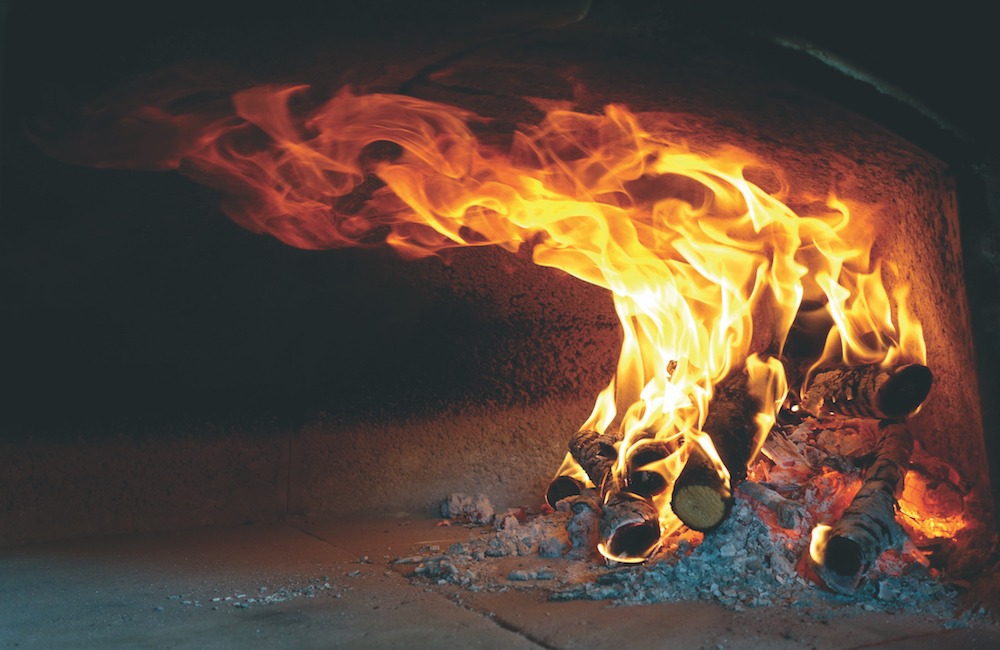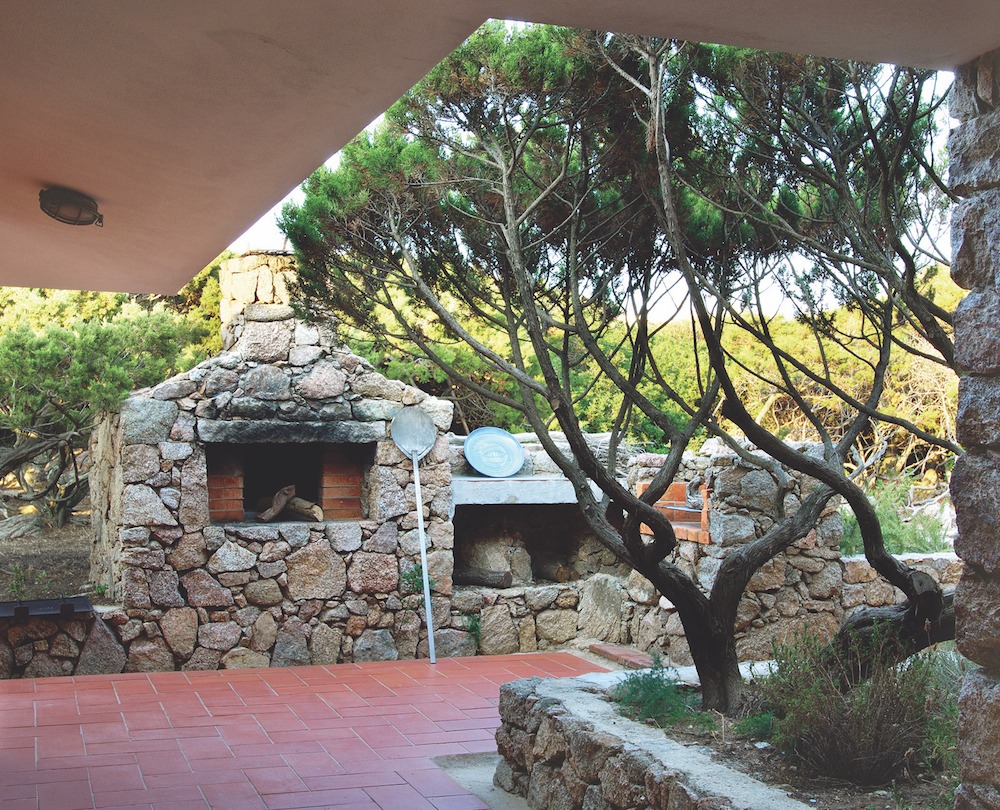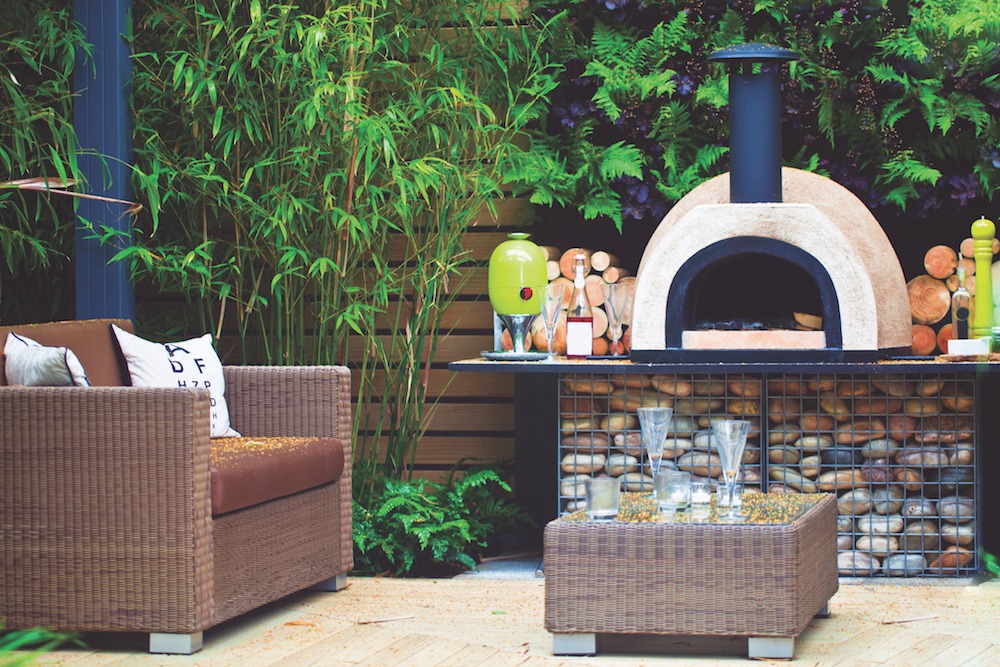As outdoor spaces are being cleverly transformed into casual living areas, homeowners are raising the bar on furnishings, cooking options and accoutrements. Once a concrete slab patio, now multi-level wood decks and stone paver areas with fire pits and hot tubs. Once a charcoal grill, then a built-in gas range, now a masonry bake oven. Once a trip to the indoor kitchen and fridge, now outdoor countertops, bar sinks and mini-fridges. Once folding web chairs, now cushioned seating with matching toss pillows. Outdoor spaces at home are taking on the look and feel of the interior with the bonus of fresh air, breezes, sunshine and lightning bug viewing. It’s easy to create a relaxing outdoor environment, and one does not have to be a homesteader living off the grid or the bona-fide chef of an elegant, award-winning restaurant to enjoy a stone or brick backyard bake oven and delicious wood-fired oven food that is unrivaled for flavor and taste.
Having a dinner “al fresco” usually means restaurant dining in an outdoor seating section. Bistros and cafes, especially in Europe, bring to mind little wrought iron tables outside with small groups and singles enjoying coffee and pastry, a little lunch or a full dinner. Just as restaurants have expanded to meet the demand of customers who want to be outside, homeowners are creating outdoor spaces for play, entertaining and dining. Al fresco means fresh or open air in Italian, and as it has assimilated into English, the space is often missing, and alfresco, one word, means the same thing.
There are many benefits to eating outside ~ or dining al fresco! Studies for adults and children have found that being outside boosts creativity and enhances one’s ability to focus. Multiple research sources point to increased self-esteem, and many patients recover from surgery faster with less pain medication when they spend time outdoors. It can strengthen your immune system, lift your spirits and improve memory and cognitive functions. Martha Stewart plugs for smartly dressed tables and clever strands of lights in the backyard, but a large piece of plywood on sawhorses can be topped with vinyl oilcloth for the same purpose. The table is secondary to the awesome flavors of food cooked in a stone or brick outdoor bake oven.
What all this means to the masonry industry is: o-p-p-o-r-t-u-n-i-t-y. A great part of work in any industry is educating the customer. According to a report from the Joint Center for Housing Studies at Harvard University, a whopping $327 billion was projected for home improvement last year [2017]. Wages are on the rise, home equity is increasing, millennials are embracing homeownership and socializing at home seems more popular than ever. Stone and brick are prized for durability and aesthetics, and living spaces outside the house walls increase property value and hold a strong return on investment. Dick Smith, executive director of the Masonry Heater Association, reports that they are seeing increasing interest in masonry bake ovens by both residential homeowners and commercial enterprises.
The Lowdown of Wood-fired Bake Ovens
Masonry bake ovens have been found in archaeological digs in every ancient civilization, and brick ovens are as common today in Italy and parts of Europe as the outdoor grill is in American backyards. Ovens using wood for heat have an oven chamber with a floor or hearth, an arc-shaped roof with sides like a dome and a front door or open entry point. “Black” ovens burn the wood in the same space as the cooking takes place either while the fire is going or after flames and coals have been removed. “White” ovens, on the other hand, are warmed by heat transfer from a fire in a separate chamber. This oven stays white for not ever having ashes or fire residue inside. Masonry ovens are ideal for their heat retention.
Oven temperatures up to 1,000 degrees Fahrenheit are possible. Stone holds heat evenly, and food is cooked from all sides including conduction from the hearth. Home cooks adept at cooking and baking a variety of foods in a bake oven can use it for different things as the temperature declines. Many stone ovens stay warm at least overnight and many for a couple days. Of course, things cook very fast in ultra high temperatures, and they are especially popular for pizza because one can cook lots of pizza when it takes just two to three minutes for each one.
According to Palmero’s Cafe & Bakery, with locations in Little Ferry and Union City, N.J. [palermocafe.com], “the radiant heat from the fire and the heat bouncing off the inside walls of the oven crisp the outside of the pizza very quickly. Any moisture in the dough is thus sealed off. This prevents the base of the dough from becoming soggy and results in a flavorful crust that’s puffy, yet soft and chewy. Only a wood-fired brick pizza oven imparts that unique smoky flavor that cannot be reproduced in a normal kitchen oven. The high temperature produces other flavors not achieved by slow cooking.
However, as heat destroys the flavor of olive oil, there is usually none contained in either the dough or the sauce. Instead, a good-quality olive oil is drizzled over the cooked pizza right before serving. The intense heat and constant air flow generated in the brick oven seals and cooks the toppings evenly and quickly. The vegetable toppings will be crispier than those produced on pizzas made in a traditional oven. This quick cooking also allows vitamins and other nutrients in the vegetables to remain. In addition, the cheese does not burn but, instead, lends itself to an appealing color and smoky flavor.”
The moist heat of wood burning can be credited for the enhanced flavor of wood-fired bake oven results. “A wood-fired oven uses all three forms of heat – convection, radiation and conduction,” explains Smith. “Wood naturally has hydrogen and oxygen in it, the same components of water, so wood burning generates moisture.” Anyone who bakes artisan bread at home from a book like “Artisan Bread in Five Minutes a Day” by Jeff Hertzberg, M.D., and Zoë François, knows that the baker adds one cup of very hot water to a broiler pan under the stone which holds the bread at the beginning of baking. This creates the luscious crispy crust of Old World breads.
A Chef’s Home Bake Oven
Chef Steve Corry’s wife and business partner Michelle is first-generation French in America, so they go to France every other year to visit family, some of whom live in the southern region. “I’ve always loved cooking outside,” he relates. “I saw an outdoor oven and fireplace in southern France and used it as the foundation for my own design.” It was just what he’d been searching for to build behind the house they purchased in 2000 outside Portland, Maine. The home came with a wonderful, modern, indoor kitchen, and the view over Scarborough Marsh is akin to a nature reality show for flora and fauna year round.
“The mortar in an old, small, stone wall out back started to crumble. It was hollow in the middle with multiple hornet nests. We decided to tear it down, and I would get to build my dream oven, a fire pit, dining area, benches, hot tub. I drew up my design on a piece of paper and asked around for stone mason recommendations.” Nate Libby’s Masonry in Dayton, Maine, came up, and Steve liked the breadth of its mostly commercial experience and their excitement for his project.
Nate Libby’s Masonry is celebrating its 20th year in business in 2018 and offers a full range of services throughout New England that includes demolition, brick, block, stone, restoration, waterproofing, pavers, retaining walls, stacks and liners. And Steve’s massive outdoor oven. The firm embraces working as a team and promotes on its website that they are “honest, hardworking and motivated. We personally care about the success of both our customers and our employees. We believe in creating lasting beauty through quality installations.”
Steve drew the plans freehand for everything, including the oven. The interior would be 40 inches high and 40 inches deep. The walls around the oven are 10 inches thick and temps can reach 800 degrees. “I added the wheel,” he says, “to maneuver the shelves up and down inside. It is an Argentinean design with the V-shaped grates slightly angled down toward the back where there are drip pans to keep fires clean and prevent flare-ups.” Foundation-wise, there is one footing for the span of the wall and fortified footing under the oven. Inside are cinderblock walls filled with concrete, and the exterior American Granite Mosaic Veneer is adhered behind those stones to the cinderblock subwall. There is also mortar between the firebricks inside the oven itself. All the rocks were cut on site, and at one point, 17 masons worked together on the project at the same time.
“The conversation started with Nate Libby in February of 2014, and it was done by June,” Steve says. He pretty much cooks everything under the sun out here – tuna steaks, cornbread, roast pig, toasted nuts. It functions as a smoker or a plain ol’ fireplace, too. “Raising and lowering the grilling surface is a huge benefit. I can drop right down into the coals for smokin’ hot, beautiful color and flavor. It’s fantastic, and I’m still learning. If I were to do it again, however, I would put in a small vent in the back, like an escape valve. When I open those doors, there’s a raging fire and heat coming right at me, even with the top vent wide open.” True to bake oven standards, there is no wiring or technology in it.
The Corrys have received regional and national accolades for Five Fifty-Five, an upscale restaurant coincidentally at 555 Congress Street in downtown Portland. He is the executive chef, and Michelle is often lauded for excellence in her wine selections. They carry hundreds of wines to pair with elegant entrees and extravagant desserts. The couple also owns and operates Petite Jacqueline [a bistro] and Portland Patisserie and Grand Cafe.
Everyone Else’s Outdoor Masonry Ovens
One of the best ways to promote any business is show-and-tell with photos on a website and/or Facebook page, plus in-depth knowledge. If an independent stone mason or masonry business has not yet stepped into the bake oven arena, there’s no better time than spring. Study up, look at photos online and review the informative videos at Masonry Heater Association’s website [mha-net.org]. Using an outdoor bake oven in the summer can dramatically reduce energy costs because homeowners won’t have the oven on inside the house while the air conditioning is struggling to keep the home cool in the first place. Additionally, an electric oven may use some 3,000 or more watts per hour maintaining its temperature. Once you are self-educated, build one at home or one for cost or one for your in-laws or friends.
If you are a beginning mason or contemplating a future in masonry and do not have lots of supplies or suppliers yet, building from a bake oven kit might be a good place to start. Stone Age Manufacturing, based in Oklahoma with dealers across the country, has a nice selection of bake ovens and other products. Its slogan is appropriately: “Modular Masonry Technology at its Finest”. “We sell to experienced masons as well,” says Rob Wright, director of sales and marketing. “They can save a tremendous amount of time vs. scratch building for the rough-in portions of a project. Fireplaces, for example, can take three days for the rough-in part, and an experienced mason can do it in half a day or less, saving a pile of time and internal labor.”
Take photos every step of the way, and be sure to include mouth-watering food pictures. We eat with our eyes. That could be the only sales angle you need. Now you are experienced and knowledgeable to help homeowners learn about masonry bake ovens and begin enjoying more outdoor, quality time at home. Having a backyard bake oven opens all kinds of new entertaining and cooking options for the whole family to cook excellent meats, pizza, breads and more. Blurring the lines between indoors and outside is easy for summer entertaining, cooking and relaxing, and with an outdoor masonry bake oven, your customers may even eat more healthy and be more healthy.
About the Masonry Heater Association
An international volunteer association dedicated to masonry heaters and bake ovens, the MHA is a wonderful resource for information, networking and education. The website features comprehensive videos on bake ovens and masonry heaters, and articles on code considerations, planning guides and its certification program for masonry heater builders. “We are committed to spreading the word about this clean burning Old World technology to both government regulators and the general public,” states executive director Dick Smith.
MHA was formed 31 years ago, and 11 years later adopted its mission statement:
MHA is an association of builders, manufacturers and retailers of masonry heaters and
masonry wood fired bake ovens whose purpose is to promote the industry,
sponsor research and development, shape regulations, standards and codes,
inform and educate the public,
and further the expertise and professionalism of its membership.”
www.mha-net.org
Joanne M. Anderson is a southwest Virginia-based freelance writer with more than 1,000 articles in print. She enjoys writing about and undertaking home improvement projects, and a masonry bake oven has now been added to her list.



